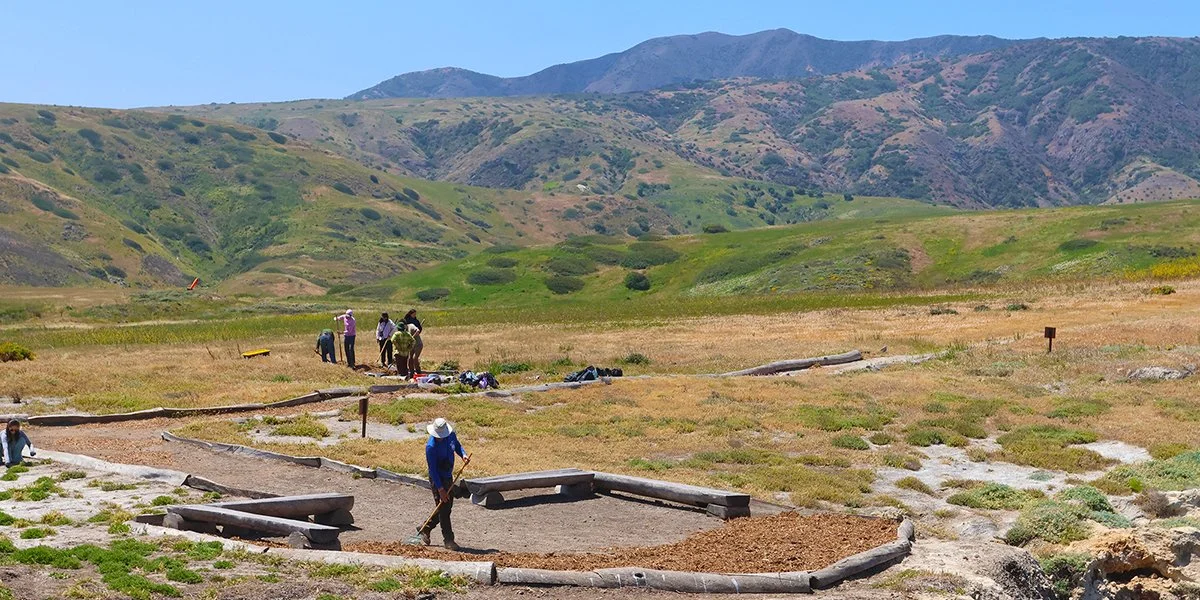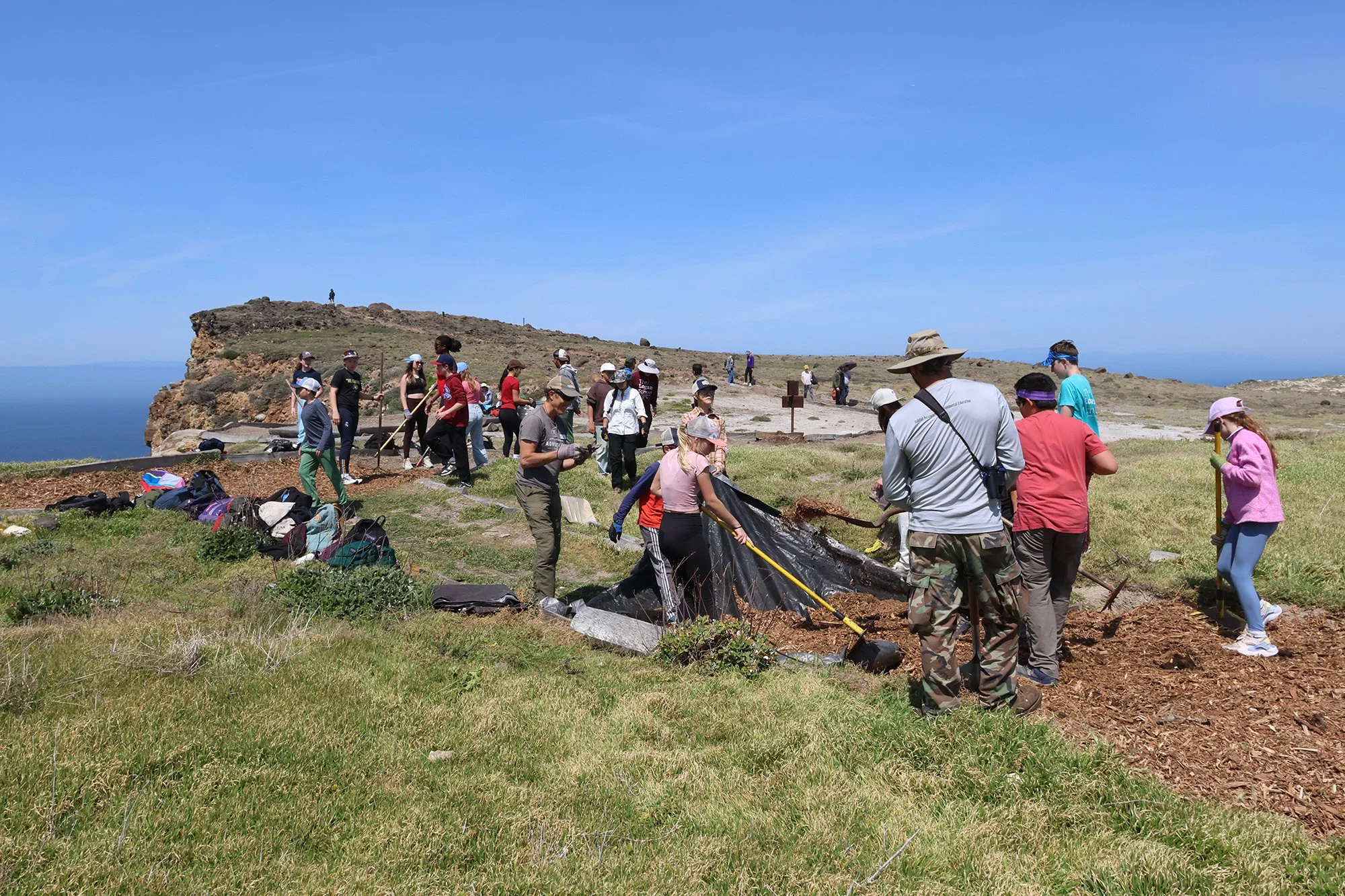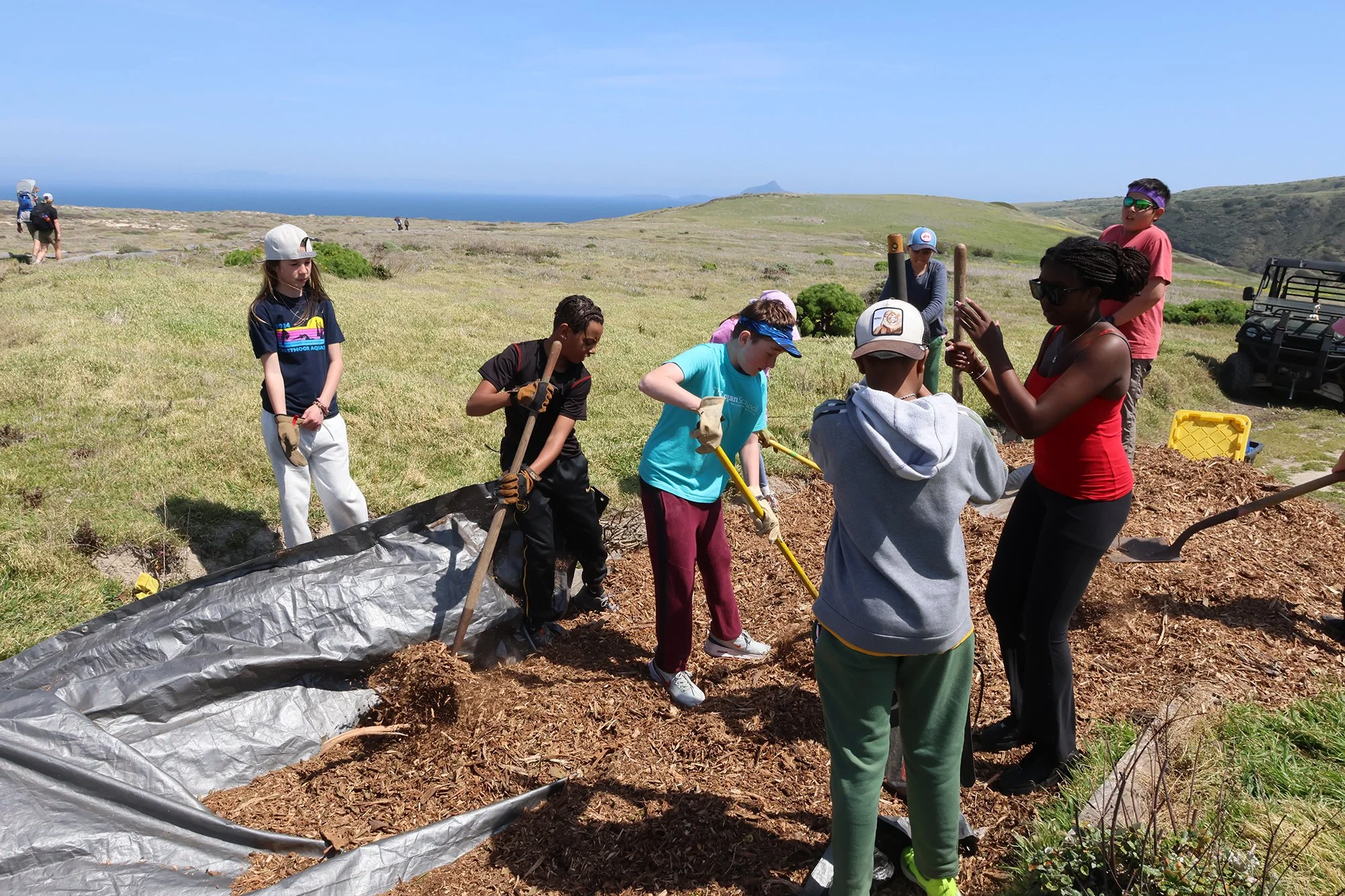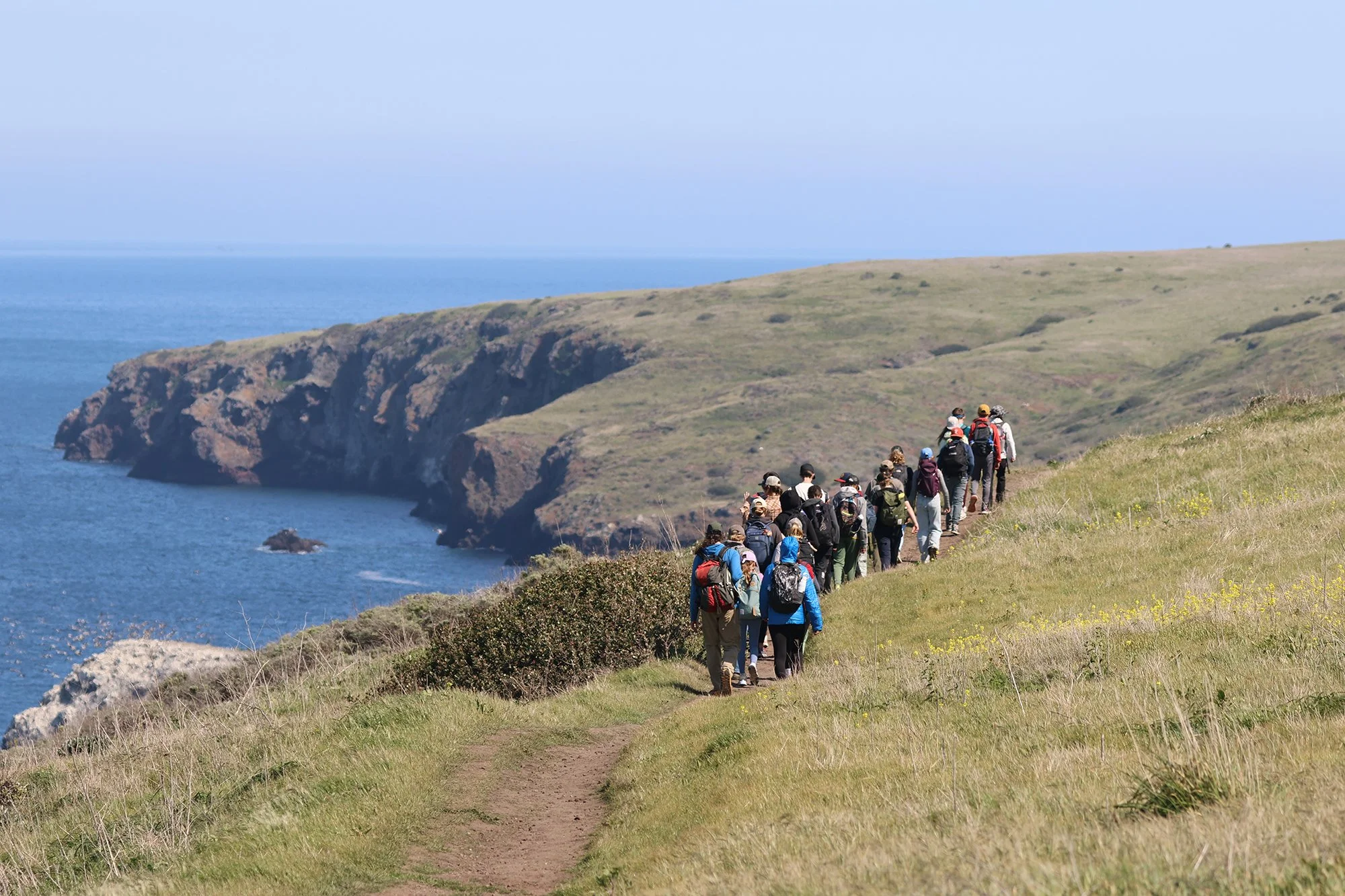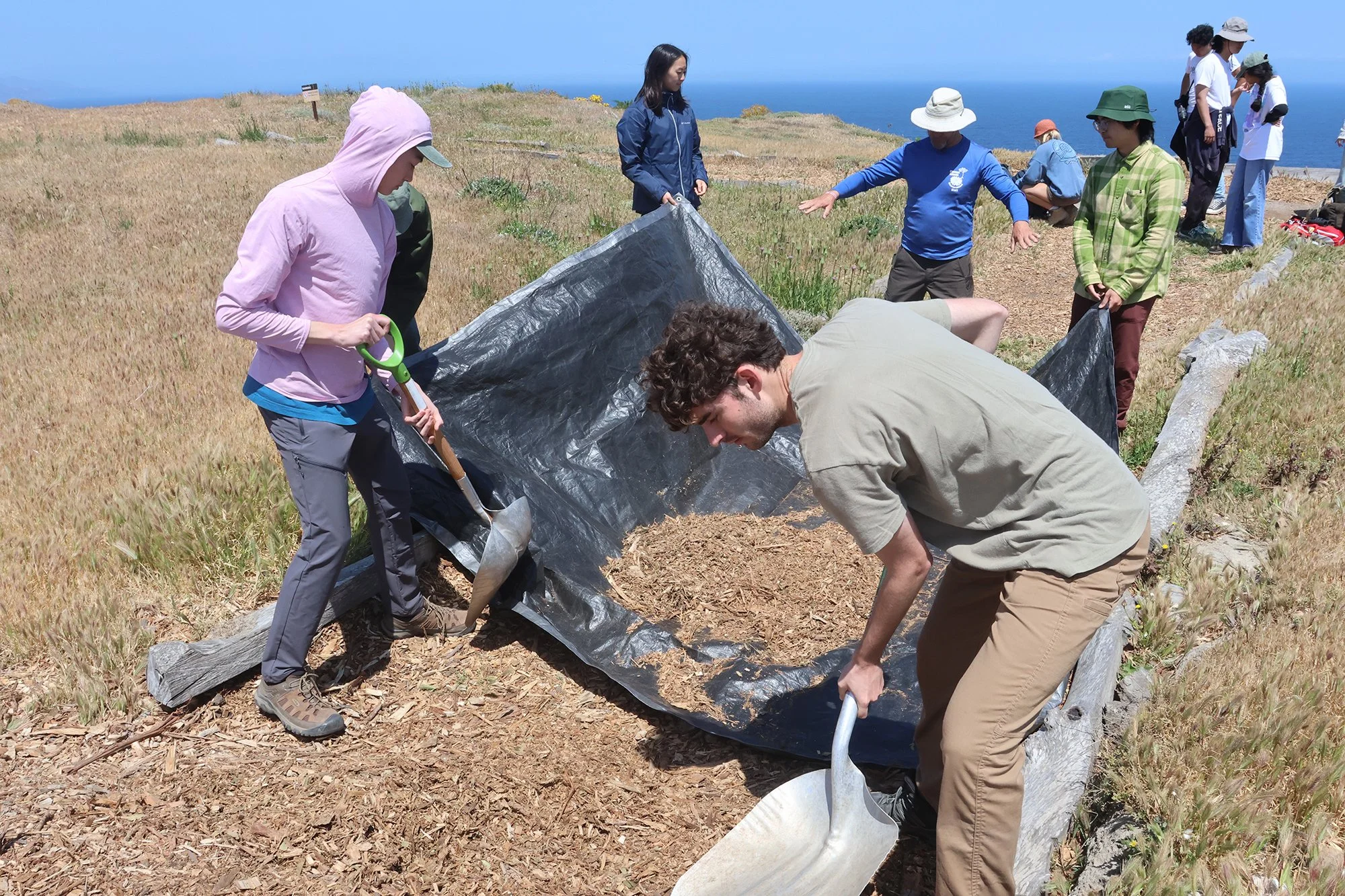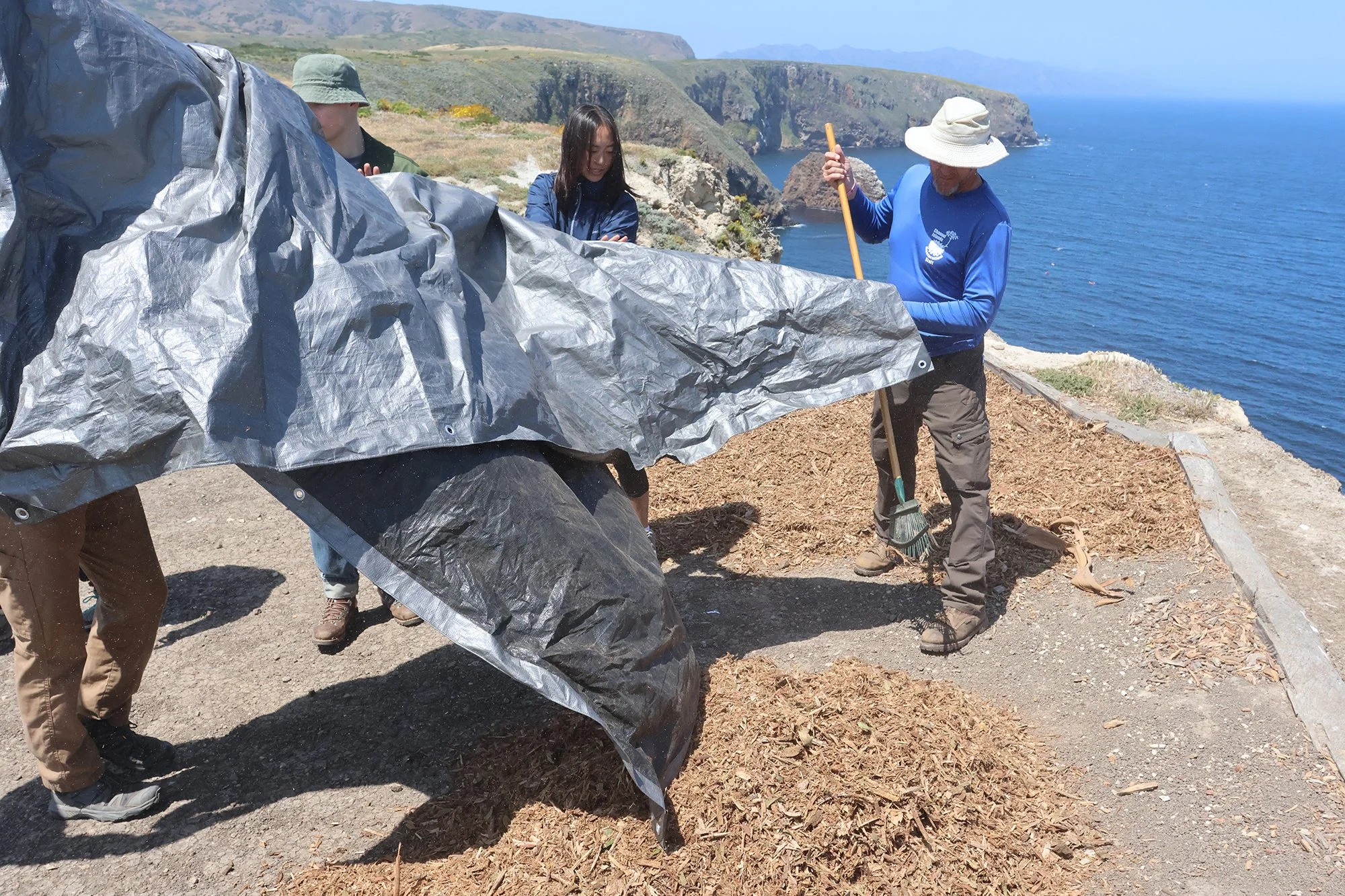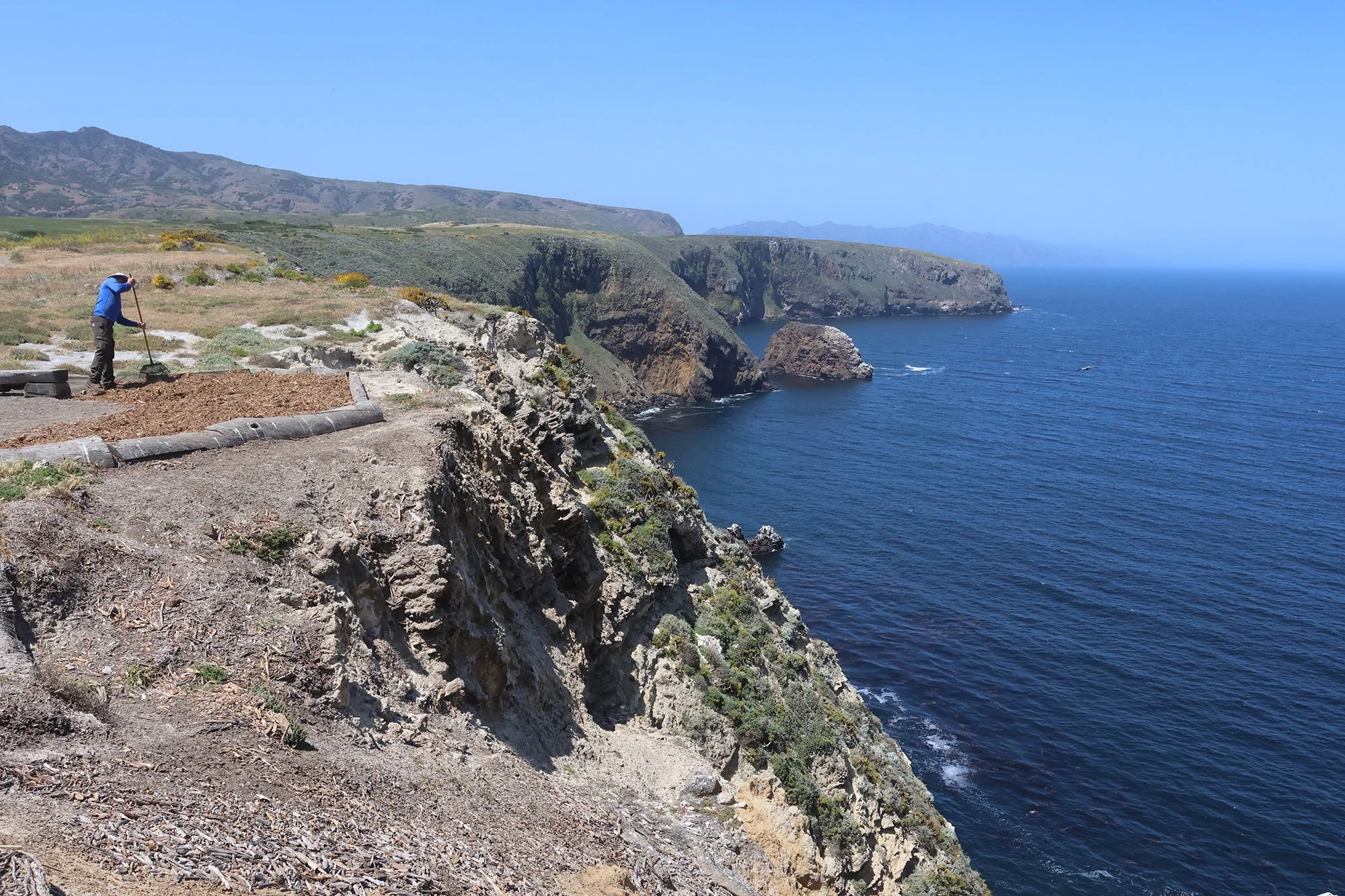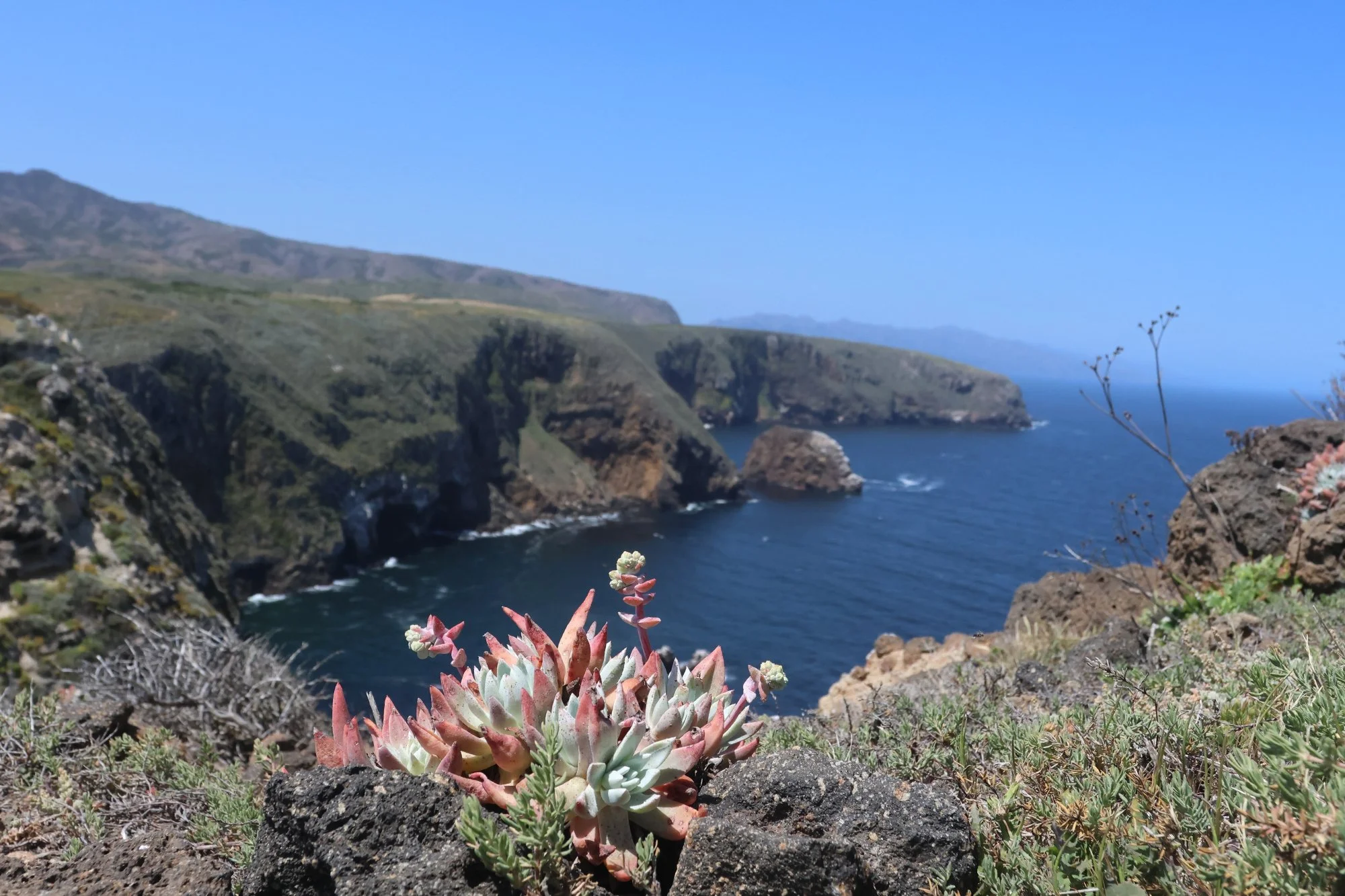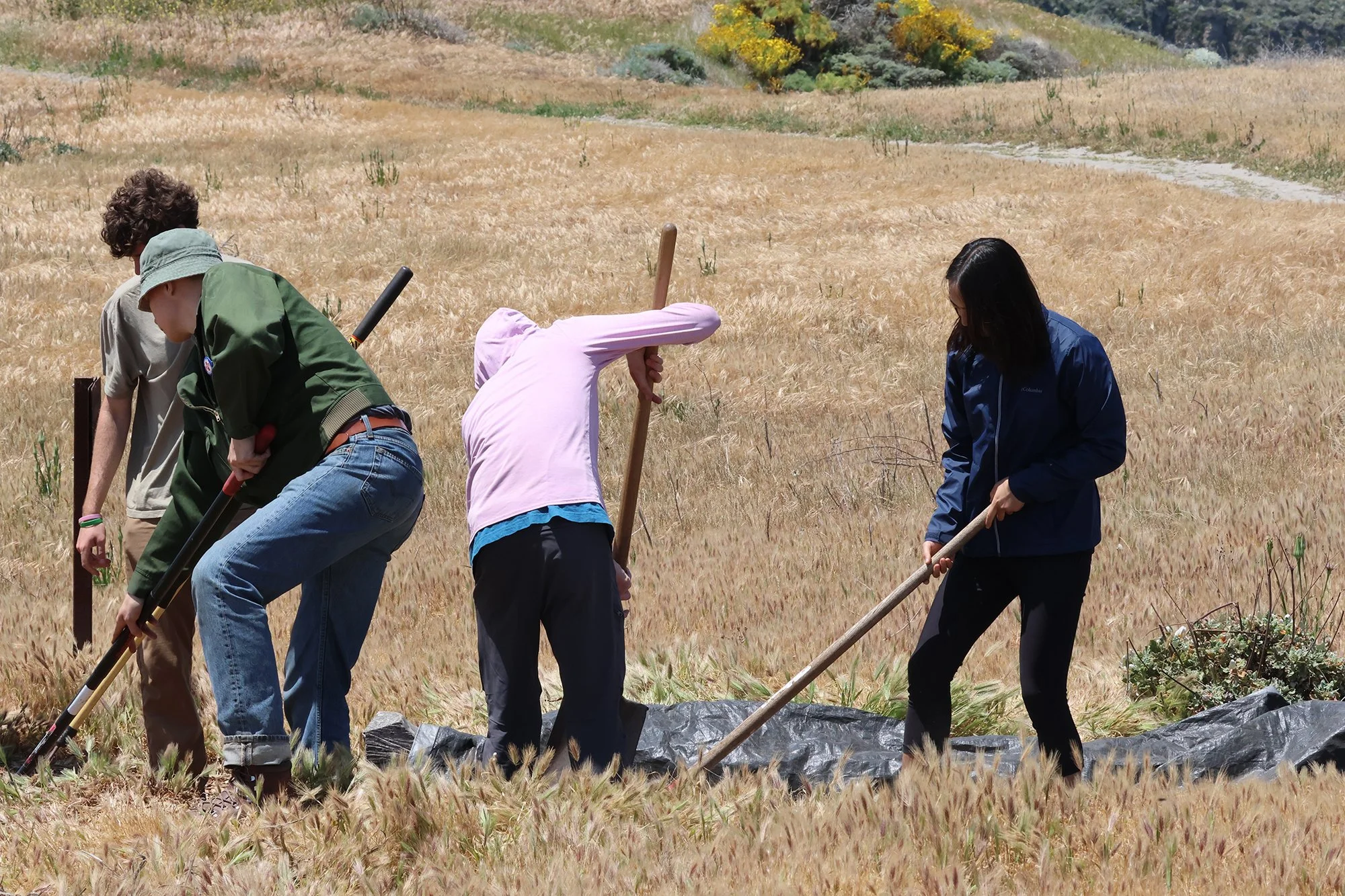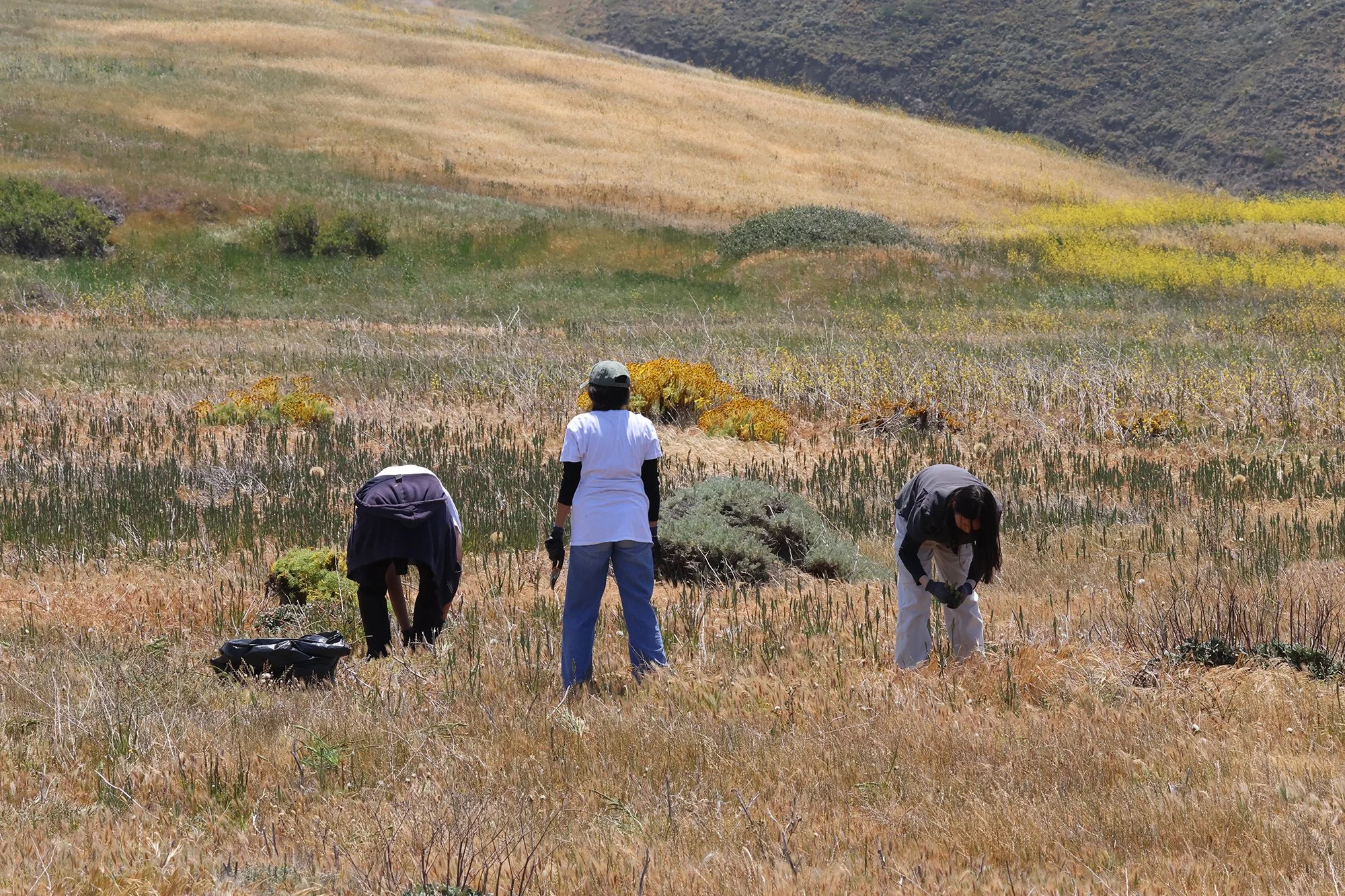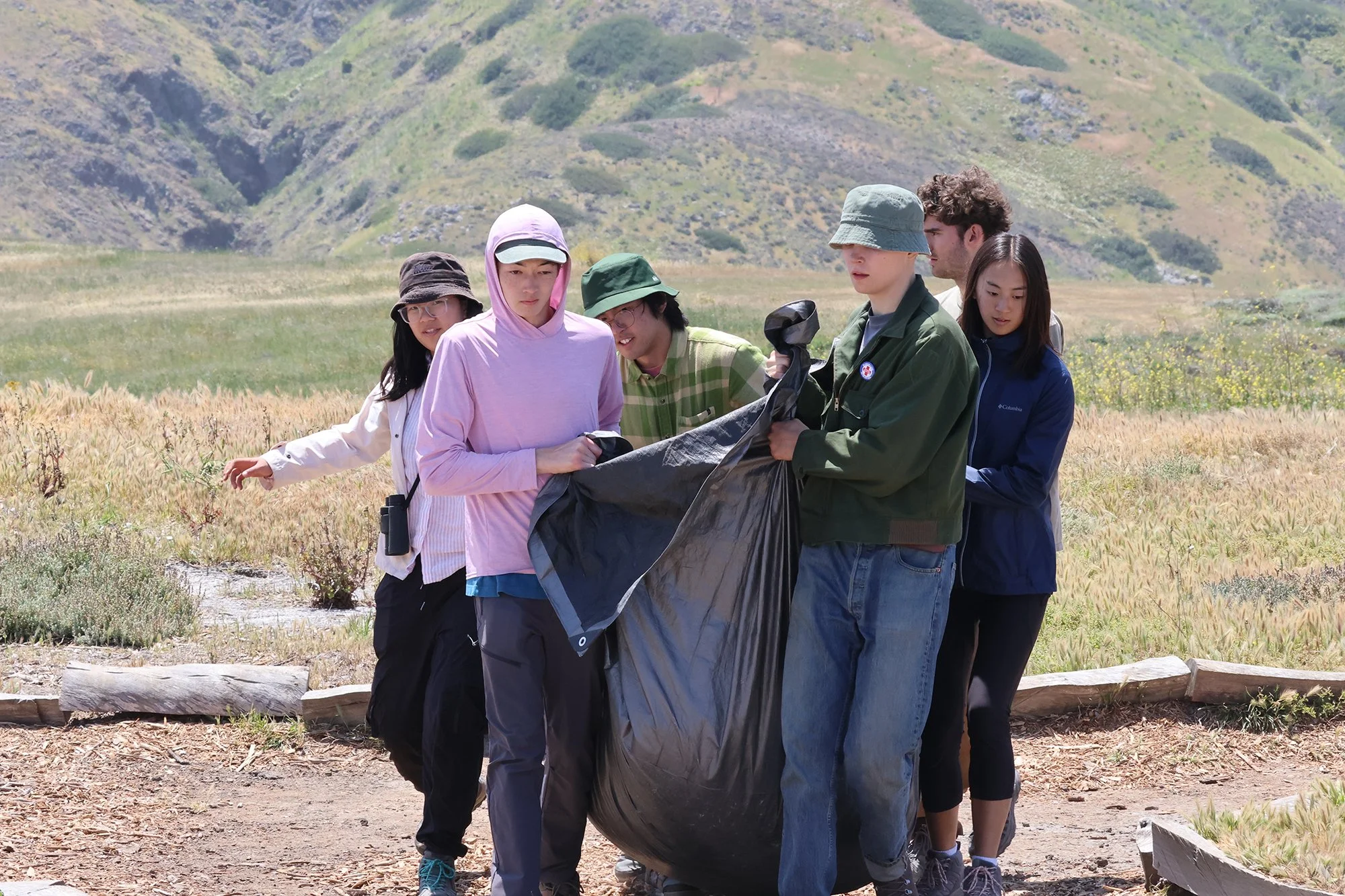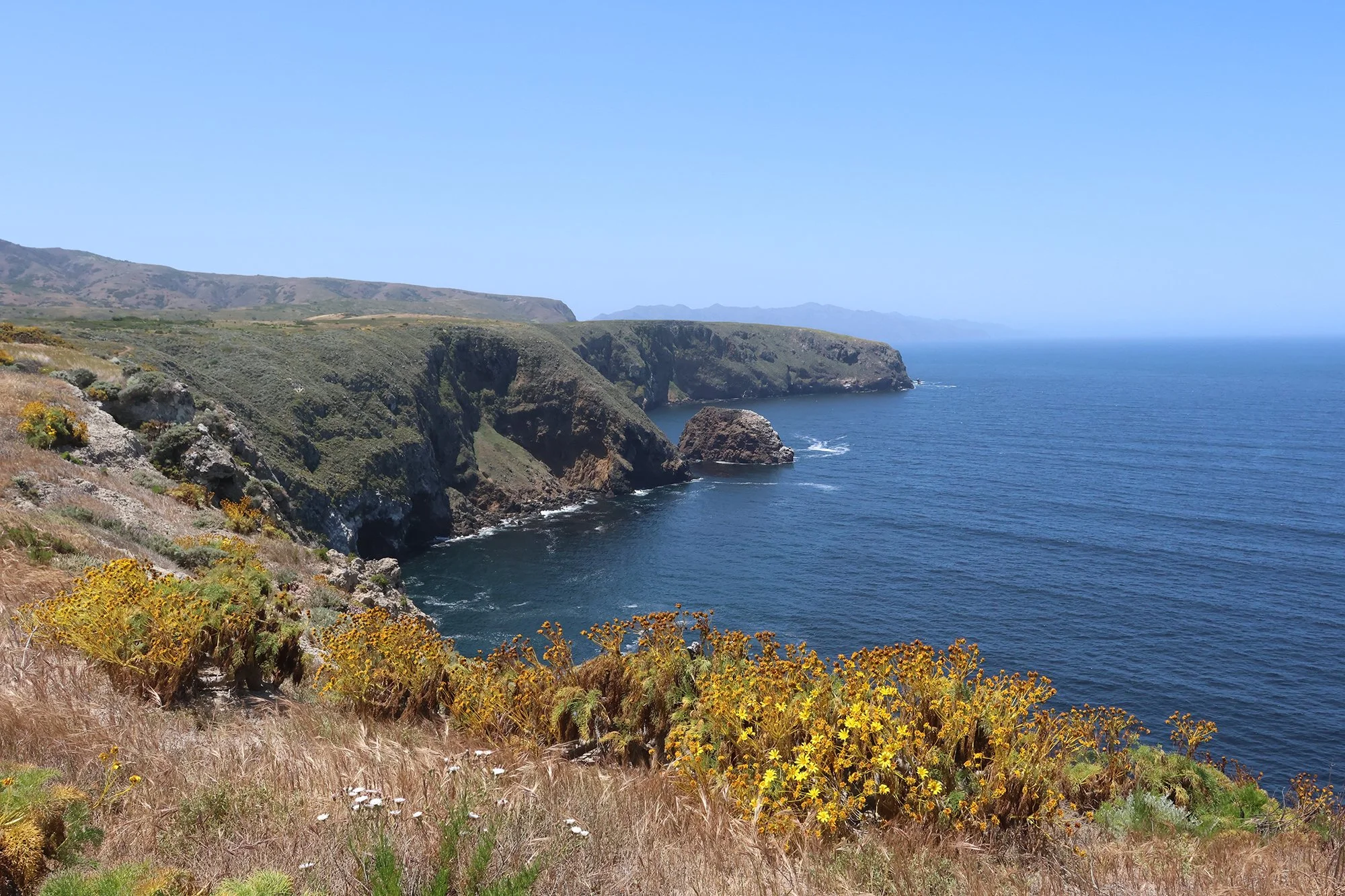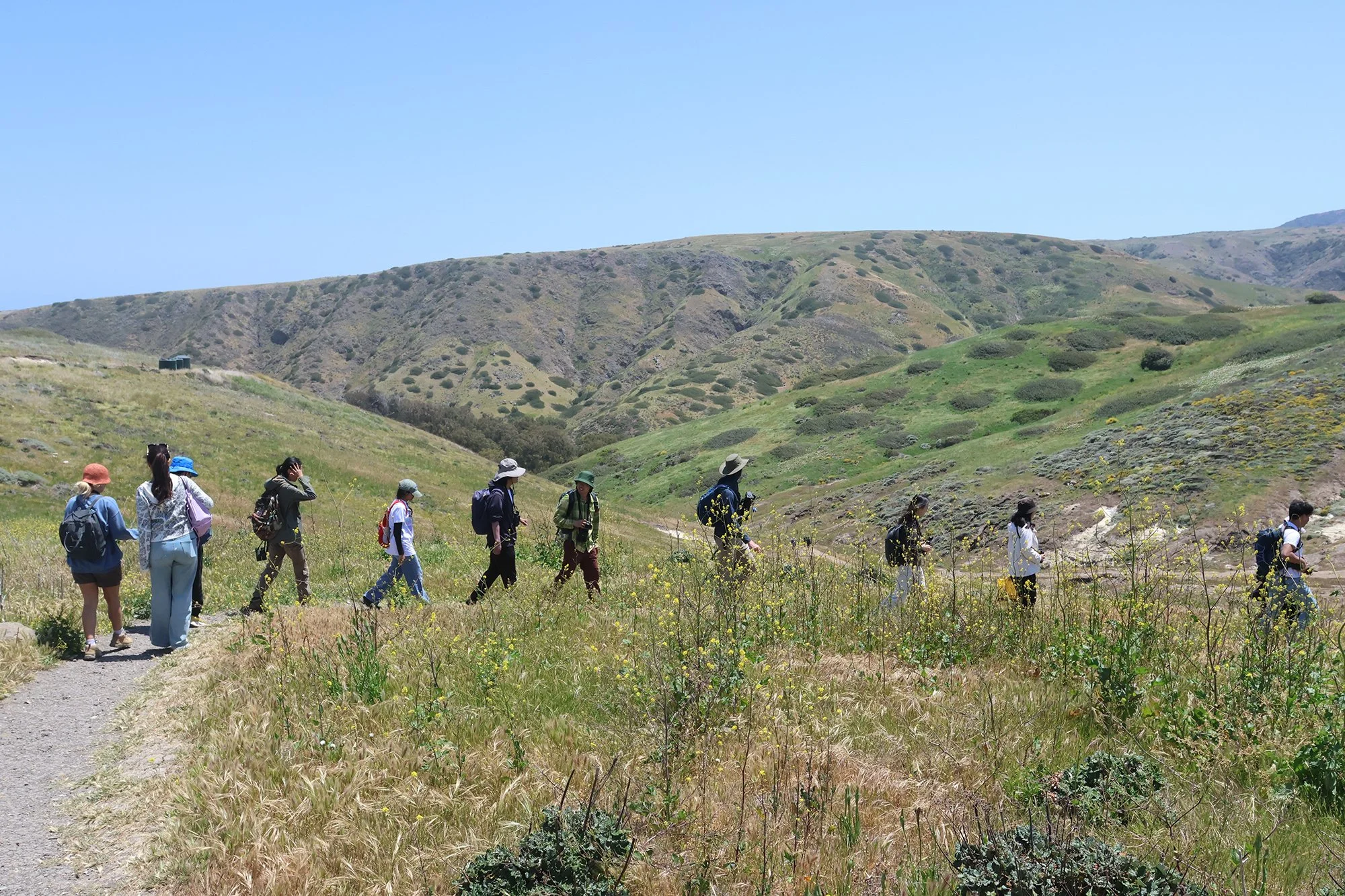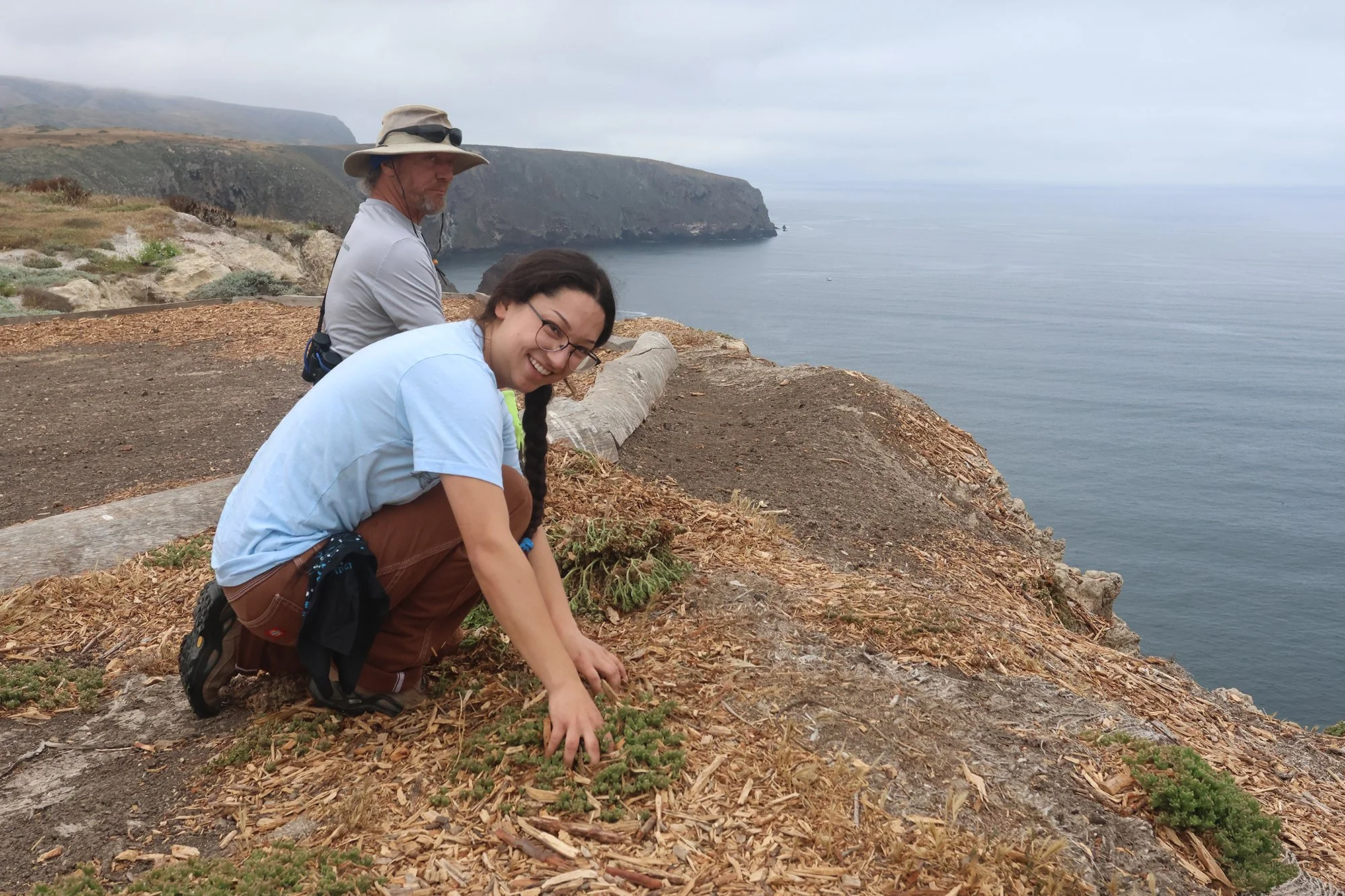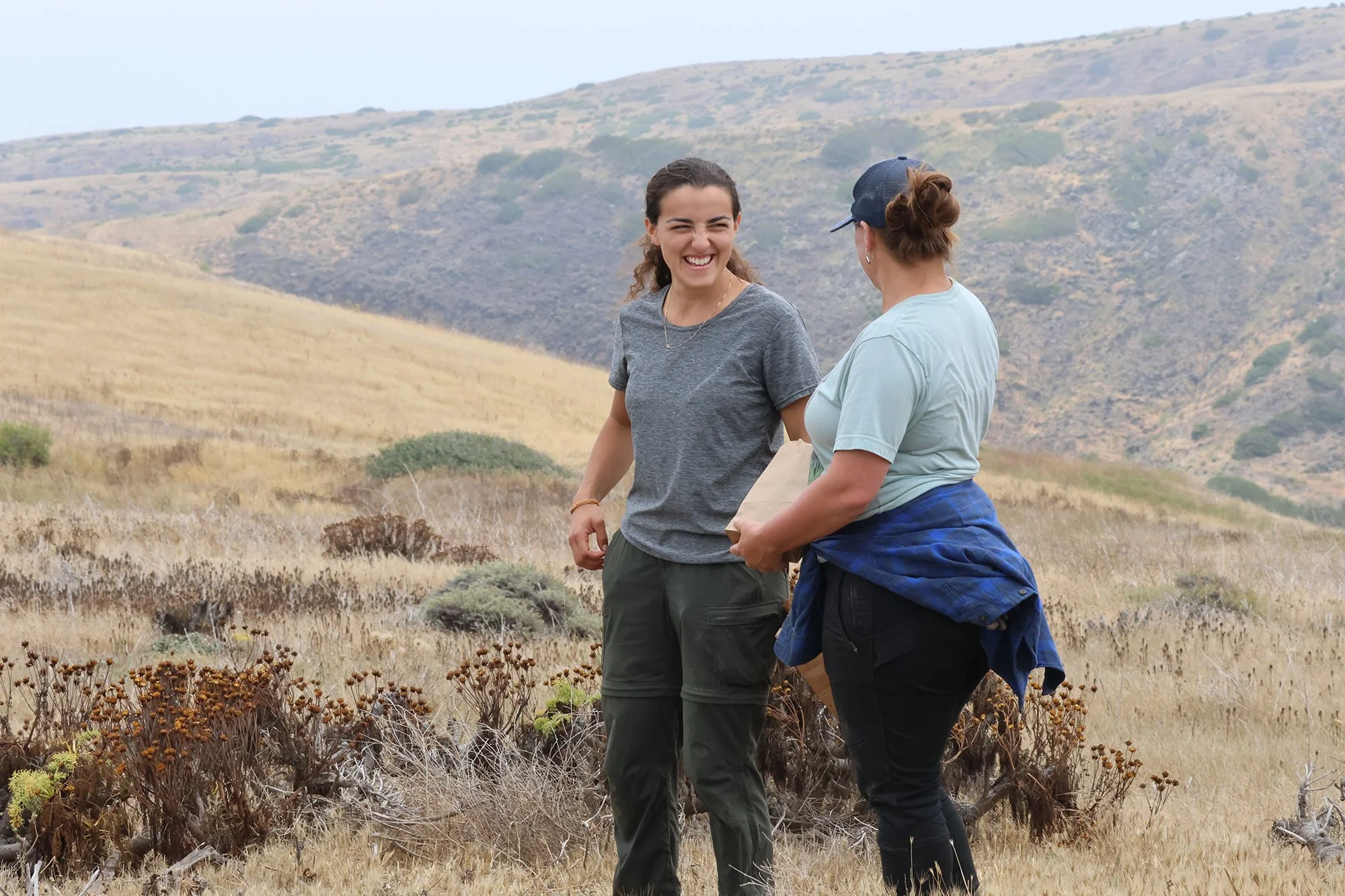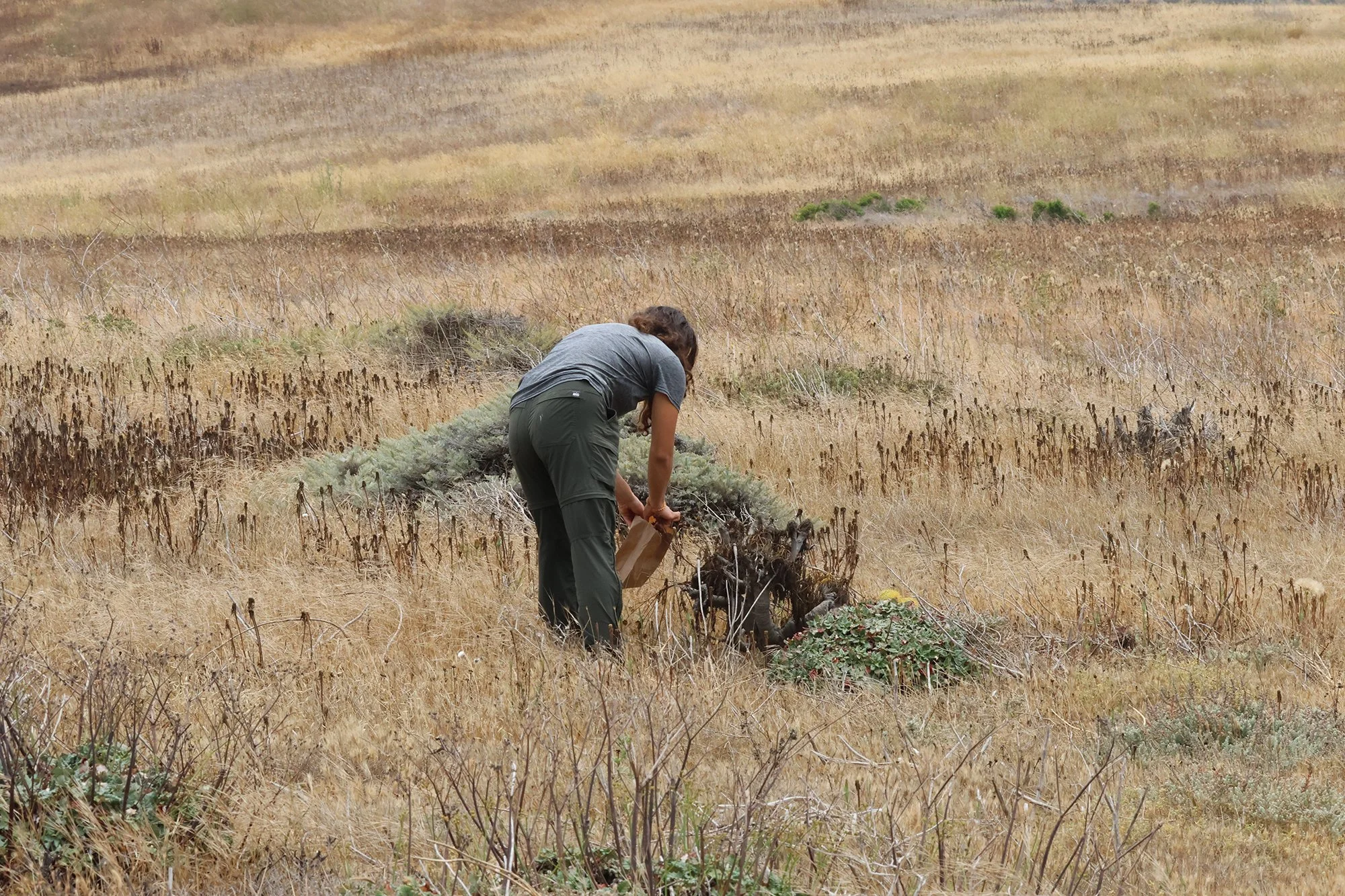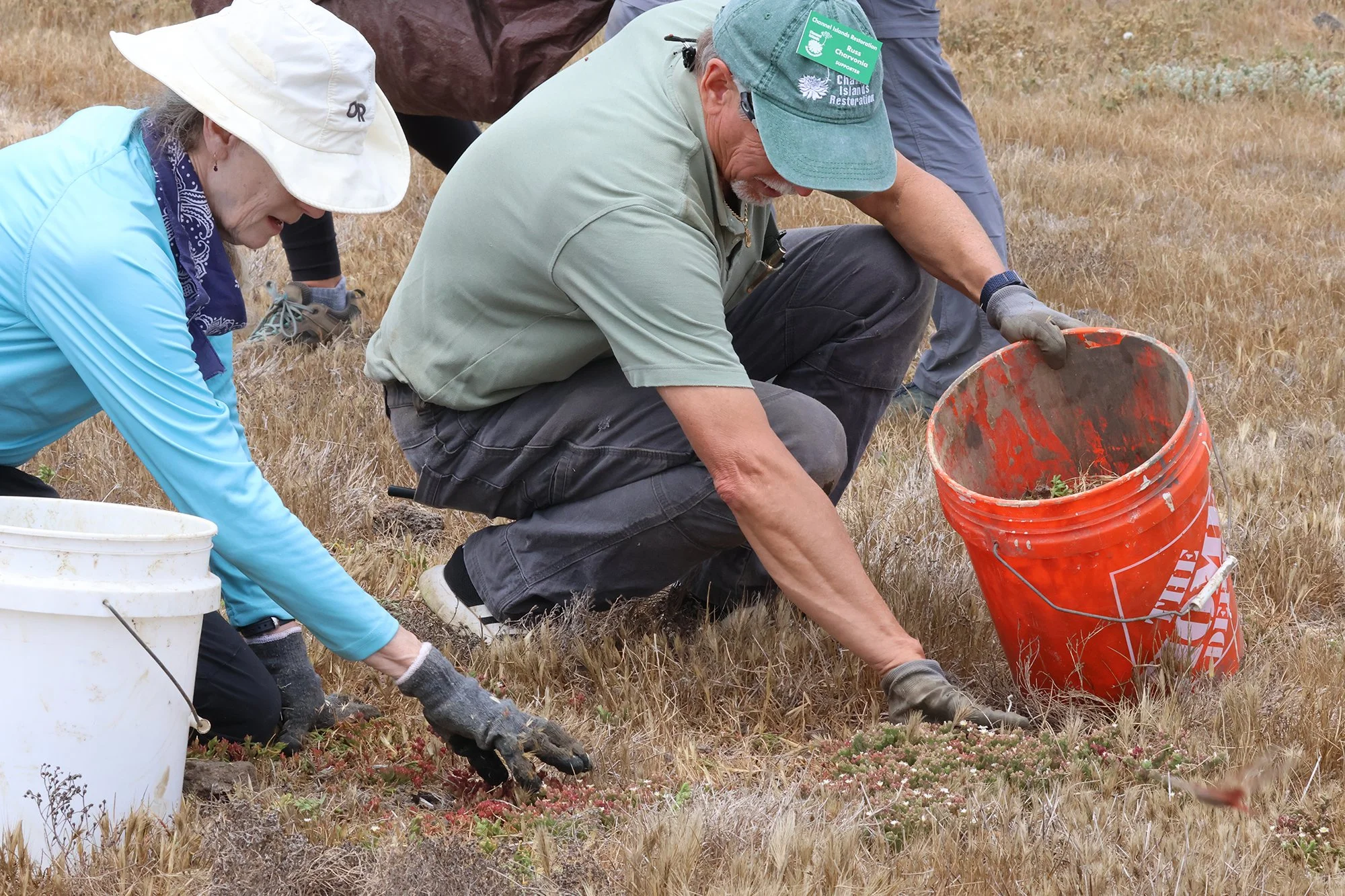CIR's Restoration Efforts at Cavern Point on Santa Cruz Island: A Year of Impact
CIR Staff and Volunteers working to restore Cavern Point on Santa Cruz Island
So far in 2025, CIR has successfully completed four trips to Cavern Point on Santa Cruz Island, bringing together dedicated volunteers and enthusiastic community service groups. These efforts are just the beginning, as we plan to schedule additional trips throughout the remainder of the year.
Cavern Point presents a challenging environment where invasive species, such as ice plant, grow in areas previously restored by the National Park Service (NPS). Many more groups offer to help restore Cavern Point than the NPS staff can lead alone, making CIR's leadership essential in accepting help to meet restoration objectives. We’re proud to step up and make a difference, and we invite you to stay tuned for more volunteer trips this fall. Together, we can continue to restore and protect this unique and fragile ecosystem.
Enjoy a gallery of recent community service and volunteer trips to Cavern Point.
Click on the photos below to see larger images.
cIR’S New Nursery For Growing Native Plants for Restoration Projects
Article by Doug Morgan, CIR Operations Manager
New CIR Native Plant Nursery progression
CIR had been using Greenwell Preserve in Summerland to grow our plants for several years, thanks to the generosity of the leaseholders. This came with a small, shaded area and tables for growing, and we never really utilized it until a couple of years ago. One of our contracts required us to grow 10,000 marsh and dune plants, which quickly filled our available space. We made it work since the 10,000 would only be in our care for a little over 8 months from propagation. However, the contract was delayed, and the plants grew large. Soon, we had, out of necessity, plants in every available space we could place them, with none of the available space being optimal. The plants began to suffer, and our regular orderly operation appeared chaotic. The little money left in the plant care budget, unfortunately, only allowed us to keep them barely alive.
We had to take action quickly…
We searched extensively to find a suitable space and closely considered four options, but each fell through for various reasons. Time was running out on both our welcome at Greenwell and for the health of the plants. Then we found it.
It took a recklessly optimistic person to look at the busted-up building, the impenetrable wall of feral vegetation just inside the door, and the limited resources available to think this is perfect! So, I grabbed my favorite machete and hacked my way in. Wyatt McLean, our nursery manager, has been mentally building his dream nursery for as long as I remember. He had all the materials calculated and sourced, the layout mapped, and even the traffic pattern of how the plants would move from propagation to point of use, so it only took a brief discussion for us to have an action plan. Fortunately, this was the case, because…
When the ink was dry on the lease, we had 14 days to move in, a sense of hopeful desperation, and 20 volunteers from Vandenburg Space Force Base coming the next day. Trucks full of materials began arriving that day, and we didn’t do much else but clean, repair, make things safe, build, lay ground cloth, and move items in from several locations. The first wave of volunteers packed two 20-cubic-yard hoppers full of vegetation, and everybody we could enlist, including well-meaning passers-by, was called to duty to help in some aspects of this historic effort.
It was the generosity of our community; people donated money, materials, and time. Even the universe stepped in by providing some tables and chairs that were found curbside on trash day.
CIR Board Member Caleb Stumberg connected us with the contractor removing the Ficus trees on Milpas Street in Santa Barbara, and suddenly we had 80 cubic yards of wood chips to move into our workspace for a very nice walking surface. We also got a giant section of one of the trunks, but more on that another time.
It’s been a month now, and half of our available space is in use, albeit far from optimal. Well, let’s say, minimally functional but not yet sustainable for the long term. Improvements are occurring daily, and much more help, time, and money are needed to get us where we need to be, which is a safe, orderly, and professional-looking native plant nursery.
Docent Programs Remain Popular at the San Marcos Foothills Preserve
Article by Ken Owen, CIR Executive Director
Left: A sheep grazing at the San Marcos Foothills Preserve. Center: Docents at the the San Marcos Foothills Preserve. Right: A sheep posing for a picture
Channel Islands Restoration has two flavors of volunteer docent programs at the San Marcos Foothills Preserve. One requires a little training and light responsibilities, and the other involves extensive training and the ability to represent CIR and the community at the Preserve.
The first program involves being a “sheep docent,” and it’s an easy way to educate the public about our grassland restoration program and about the improvements to fire safety that come along with the grazing. Once or twice a year, sheep are brought to the Preserve to graze in grasslands that are a mixture of native grasses and non-native European grasses, the latter of which are ecologically destructive to the habitat, particularly to ground-nesting birds. Sheep Docents are given a pamphlet of information containing multiple topics about the Preserve and the goals of the program, including the benefits of the grazing. Most people in the public are delighted by the presence of the sheep and have many questions that docents are trained to answer. A few folks might be concerned that the sheep are “eating everything” and that such practices are destructive. We train docents to explain that through detailed environmental monitoring and careful timing, grazing can be accomplished in a way that promotes the growth of native plants while limiting the infestations of non-native weeds. Docents are also trained to keep people and pets safe around the sheep enclosure fencing, and to answer many other questions about the animals and the ecological benefits and the fire safety they bring.
The “Preserve Docent” program requires more commitment and includes training in ecology, geology, public relations, and instruction about how the landforms of the Preserve influence the vegetation and the animals that live there. Docents complete five modules of online training, plus two walks on the Preserve with the CIR Executive Director, and each module is associated with a test of the material. Once the training is complete, docents pick four-hour shifts to visit the Preserve, and while wearing a “Nature Preserve Docent” vest, interact with visitors and answer questions. One huge benefit of having these docents there is to show the public that the Preserve is cared for, since County Parks personnel can’t always be present on the property. CIR will be adding a component to the program where Preserve Docents will be leading short tours on the Preserve for the public, which will require some additional training. We have ten active docents in the program (six joined recently), and more are needed. These volunteers are to be commended for their dedication of time and commitment to the San Marcos Foothills Preserve and the plants and animals that call the area home.
If you would like to become a Preserve Docent or a Sheep Docent, you can sign up with the links below, or please contact Natasha Booth at natasha@cirweb.org.
Become a San Marcos Foothills Sheep Docent or a Preserve Docent
Take Flight with the Western Bluebird Lesson Plan!
Lesson Plan developed by the CIR Education Committee - Design work by John Ziegler
Calling all educators, parents, and bird enthusiasts! The CIR Educational Committee is thrilled to unveil an exciting new lesson plan all about the charming Western Bluebird (Sialia mexicana).
This vibrant, feathered friend is the star of a comprehensive, hands-on learning unit designed to captivate fifth-grade students and align seamlessly with the Next Generation Science Standards (NGSS) for “Earth and Human Activity.” Middle schoolers can also dive into the fun with NGSS Life Science standards on “Ecosystems: Interactions, Energy, and Dynamics.”
Here’s what’s packed into this treasure trove of bluebird brilliance:
Five engaging lesson plans that bring science to life.
Interactive lab sheets on system models and animal adaptations.
Videos, articles, and an interactive PowerPoint that:
Teach students to identify Western Bluebirds at every life stage.
Compare other blue-hued birds to our Western Bluebird.
Share their songs and calls (yes, you can hear them sing!).
Explore their diet, habitat maps, and even their cozy cavity nests.
Build a Bluebird nesting box with instructions on how to build and install a new nesting box.
Whether you’re a teacher looking to inspire your classroom, a parent diving into homeschooling, or just someone who loves birds, this free resource is ready to take your lessons to new heights.
The lesson includes an Interactive PDF and a PowerPoint Presentation - Download both below and let’s soar into the world of Western Bluebirds together!
Download the Lesson Plan Document (PDF) and the Lesson Plan Slides (PPT)
Autumn Equinox Tour 2025
Experience Santa Rosa Island during our AUTUMN EQUINOX CRUISE!
Join CIR members and environmental educators on Thursday, September 25th, 2025
A Fundraiser for the East Santa Cruz Island Restoration Project
Channel Islands Restoration is excited to bring you a trip to the beautiful and remote Santa Rosa Island, where you will enjoy spectacular views, great company, and ample time to enjoy island life among friends. Learn about the island history, geology, and ecology among peers and like-minded environmental enthusiasts! Join us in exploring sandy white beaches, visiting the rare Torrey Pines, hiking the breathtaking Cherry Canyon, and much more! We’re looking forward to the island adventure!
The island cruise is available to everyone. You don’t have to be a CIR member to join us.
A 25% discount is available to Island Fox Members, and a 15% discount is available to Island Ironwood Members.
Please contact John Ziegler at john@cirweb.org or 805.448.1501 for questions and information regarding this event.


